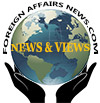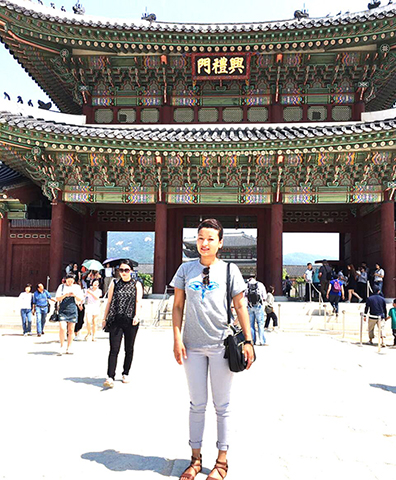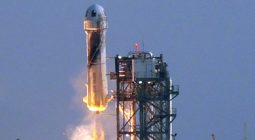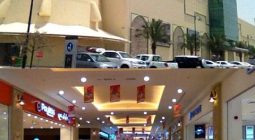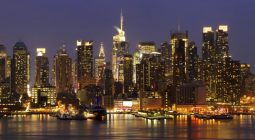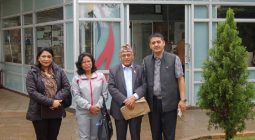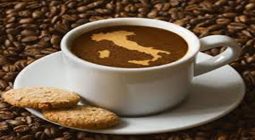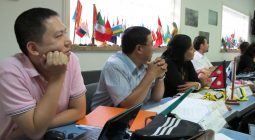Traveling the world has its ups and downs, highs and lows, pros and cons. Travel experience has resulted me that there are things that are more important than pleasure or happiness.
Each cultural trait has advantages and disadvantages. Therefore, it’s often the most apparent and obvious aspects of each country’s culture that is both the best and the worst about that country.
Many people embark on journeys around the world in order to “find themselves.” In this regard, I myself also embarked the Seoul, the capital of South Korea almost a year ago with my family members. The city is a sprawling metropolis where hyper-modern skyscrapers, high-tech subways and pop culture meet Buddhist temples, palaces and street markets.
Theme Park in the city draws visitors into a world of fantasy and adventure. Harmonized with the natural wonders of the southern outskirts of the capital city, Seoul is a famous destination for families. It offers everything from high-tech modern rides to the more gentle and relaxed variety, and is guaranteed to appeal to a wide assortment of tastes by providing a feast of cultural activities.
Modern–day Korea is a nation that has rebuilt itself from the devastation of war and has achieved an economic miracle in short-period, is serving today as a model for many developing countries.

Korea, with its natural beauty and unique culture that is unlike any other Asian country, stands ready to welcome visitors from around the world.
The capital city Seoul having a municipal population of over 11.8 million, and a metropolitan population totaling over 25.6 million is by far South Korea’s largest city and one of East Asia’s financial and cultural epicenters that functions as the nation’s hub for politics, business, education and modern culture. It is a fascinating city where the past and the present coexist.
Seoul is as modern a city as they come, and at first glance can be compared to most other modern big cities. Still, underlying all that and all the Westernization, Seoul is still wholly Korean with historical touches found all over. With temples and markets interspersed with luxury hotels and department stores, everything you may be looking for can be found here.
First of all, Seoul is extremely safe city. Even in the middle of the night in a dark alley, its 100% safe. I know it’s hard to believe, but it’s true. It’s the safest city in the world, in my opinion. Seoul is full of great attractions for families.
There are tons of museums as well as Lotte World and Everland amusement parks. Throughout the year, there are various festivals and parades for all sort of occasions and holidays. The locals are kind, helpful to foreigners, and many of them can speak some English. The downtown areas are clean and expansive. There are various restaurants everywhere where we can try different kinds of traditional Korean foods at all price ranges. Also there are palaces scattered throughout the city that offer a look into the culture of Korean kingdoms of years past.
Centuries–old palaces, gates, royal tombs and shrines are juxtaposed with soaring skyscrapers, a high-tech infrastructures and bustling businesses. There is a rich and satisfying variety of things to see and do, for residents and visitors alike. Mountains are all around the city, providing the people with beautiful sights and natural comfort.

Notable attractions include futuristic Dongdaemun Design Plaza, a convention hall with curving architecture and a rooftop park; Gyeongbokgung Palace and Jogyesa Temple.
A fascinating blend of ancient traditions and cutting-edge digital technology, home to endless street food vendors and vast nightlife districts, an extraordinarily high-pressure educational system and serene Buddhist temples, a trend-setting youth culture and often crushing conformism, extraordinary architecture and endless monotonous rows of grey apartment buildings, Seoul is a city filled with stark contrasts.
The beautiful Han River, which flows from east to west bisects the city and provides a breathtaking view of Seoul’s ever-changing city-scape.
Seoul had demonstrated its capabilities as an international city when it successfully hosted the 1986 Asian Games, 1988 Seoul Olympics and World Cup in 2002, APEC meeting in 2010.
Seoul, originally named Hanseong, the city was the capital of the Joseon Dynasty from 1392 to 1910.
Seoul is a very well organized city covering over 600 km² is a new modern city built on an ancient and shining history. The city is located in the north-western portion of South Korea approximately 40 km east of the Yellow Sea and 60 km south of the Korean Demilitarized Zone (DMZ).
As a capital of Joseon Dynasty (1392-1910), Seoul is steeped in cultural heritage and architectural splendour including imposing ancient gates, fortress walls and temples as well as the elegant palaces of Gyeongbok, Changdeok and Deoksu.
Gyeongbok Palace has been a popular tourist spot for its breathtaking reminder of traditional Korean architecture.
The National Folk Museum and National Museum of Korea in the palace offer vivid accounts of lifestyles of ancient Koreans. Deoksu Palace entertains visitors with the changing of the royal guard ceremony.
Namsongol Traditional Korean Village offers ancient houses, furniture and artistic works of renowned artists, while the city’s southern gate Namdaemun designated as National Treasure No.1 presents an impressive view.
Korean Folk Village is a famous tourist destination for foreigners. The world’s largest indoor amusement park, Lotte World Adventure, entertains visitors with a diversity of festivities all year round.
Coupled with their unique interior designs and events such as magic shows and live music performances, cafes in the Mapo-gu area offer a fascinating detour into one of the nerve centers of the “University Scene” in Seoul.
A shopping paradise for foreign shoppers and nightlife seekers, Itaewon boasts thousands of stores for clothes, leather goods and antiques along with discotheques, night clubs, bars and restaurants offering various international cuisines.
To experience the harmony of Korea’s modern and ancient art, Insa-dong is a must to see that attracts foreigners eager to relish traditional Korean tastes.

Myeong-dong, the busiest district of downtown Seoul, functions as a centre of fashion, shopping, cuisine and leisure to meet its status as a social tourist zone.
With fresh produces and a cheerful liveliness, traditional markets are major features is Seoul. Jungbu Market, specializing in dried fish and other dried foods; Hwanghak-dong flea market, dealing in second hand goods; Garak-dong Produce Market, trading agricultural products from across the country; Gyeong-dong market, for oriental herbal medicines; and Noryangjin fisheries market, with 400 stores selling seafood.
Dongdaemun Market, Namdaemun Market, and the COEX Mall in southern Seoul have also played an important role in attracting foreign tourists to Korea.
Seoul’s infrastructure is exceptionally modern and clean. The subway system is the third-largest in the world and perhaps one of the finest.
In recent years, Seoul has been swamped with tourists from China, Japan, and ASEAN following the success of Korean pop culture.
As the capital of a country that has gone through massive development in the past sixty years, this frantic pace of life is reflected everywhere – in Seoul’s cutting-edge digital technology, vibrant nightlife scenes.

The trains in Seoul are also easy to navigate. So, nobody has to worry about getting lost. Though, exits can get a bit confusing because one train station can have up to 14 exits. As Wi-Fi is everywhere and its free. So using GPS could find the way out. The most important points to be remembered is the Seoul people are very helpful. Even if they cannot speak English (like the elderly) they will try their hardest to help. One of my experiences was a lady on the road helped me to call my relatives with her own phone when I asked her where is the nearest public phone. That was very sweet of her.
During the stay days of about a week, I realized that “Meeting, Eating, Drinking and Night Sleeps Forgiving” could be said to be a culture of modern Korean society.
I also found that Koreans are open-minded, gregarious, patient, and harmonious. I became aware of their humanity as I received warmth.
After all these, I think that the most valuable quality of Korea is the people’s injong, or warm-heartedness. Thus, I feel that I was wholeheartedly welcomed by every Koreans during my first trip to abroad in 2016.
